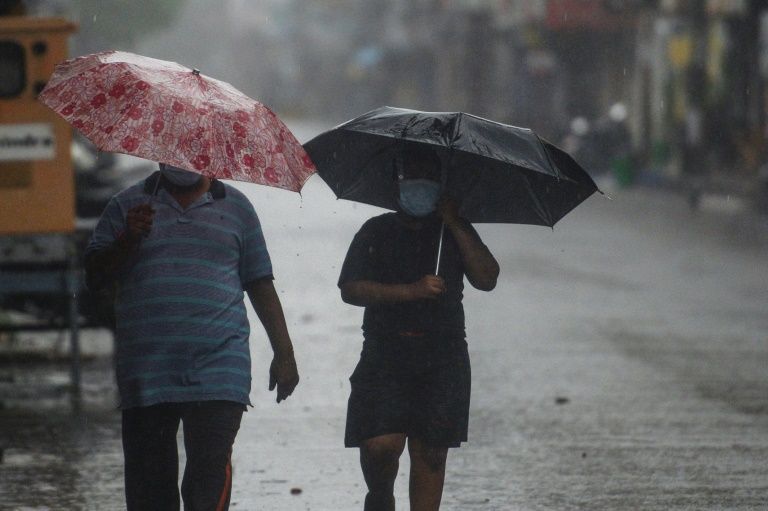Powerful cyclone buffets southern India pushing tens of thousands into shelters
Thousands of state and national emergency personnel were deployed in the southern regions of Tamil Nadu, Andhra Pradesh and Puducherry as authorities suspended power supply across several cities to prevent damage to the electricity grid.
One woman in Tamil Nadu died after a boundary wall collapsed following heavy rains late Wednesday, local media reported.
Initially classified as a “very severe cyclonic storm” as it swirled in the Bay of Bengal, Nivar weakened after landfall into a “severe cyclonic storm”, the India Meteorological Department (IMD) said.
It is forecast to move north and further weaken over the next few hours, the weather bureau added.
The danger “is not over yet as some part of the cyclone is still over the sea though center is over the land,” the IMD tweeted.
The fierce winds uprooted trees and toppled electricity pylons while downpours lashed parts of the region, causing flash floods.
Cuddalore district in Tamil Nadu recorded nearly 244 millimetres (9.6 inches) of rain since Wednesday morning, with a severe weather warning for further thunderstorms in place for the state.
Tamil Nadu minister R.B. Udhayakumar said late Wednesday that around 175,000 people were moved to shelters across the state as local authorities declared a public holiday Wednesday and Thursday, shutting everything except emergency services.
Flight operations at Chennai airport were suspended until Thursday morning and metro train services halted.
In Puducherry, home to 1.6 million people, the rain-soaked streets and markets were deserted and Lieutenant Governor Kiran Bedi appealed to locals to stay indoors and abide by authorities’ instructions.
“Move to high places wherever you have to. There are relief centres. Please move there,” Bedi said in a video message on Twitter.
The navy said its ships, aircraft and crew were on standby to assist with disaster relief.
But people in some pockets along the coast were reluctant to abandon their homes and fishing boats and move to government shelters.
In Tamil Nadu’s capital Chennai, authorities said they were also closely observing the level of reservoirs and lakes to avoid a repeat of 2015 flooding which killed several hundred people.
Lake Chembarambakkam outside Chennai discharged extra water because of the heavy rains amid warnings to residents in low-lying areas.
No evacuation orders were issued in Sri Lanka but heavy rains were forecast, particularly in the north of the island nation.
Fishermen there were advised not to go out to sea.
More than 110 people died after “super cyclone” Amphan ravaged eastern India and Bangladesh in May, flattening villages, destroying farms and leaving millions without electricity.
But the death toll was far lower than the many thousands killed in previous cyclones of that size, a result of improved weather forecasting and better response plans.
burs-ja/grk/bfm
Disclaimer: Validity of the above story is for 7 Days from original date of publishing. Source: AFP.


